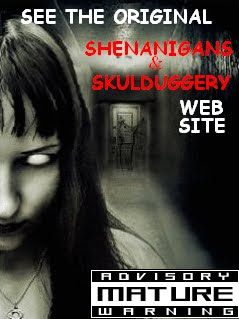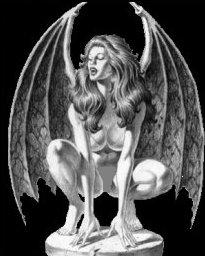An Exorcism On Moqattam Hill
Cairo’s squatter settlements of Mansheyet Nasser are where people go to literally face their demons. Carved in the Moqattam Hill is the Coptic monastery of Saint Simon, known for its preacher Father Samaan Ibrahim, one of Egypt’s few exorcists. Every Thursday, the monastery, which can hold more than 20,000 worshipers, attracts people of different backgrounds who seek to get rid of demons who they believe have possessed them. Father Ibrahim, who is dubbed ‘the rescuer’ by the neighborhood’s residents, hailed from Shubra in 1974 upon repeated requests to preach to Christians in the neighborhood who may have lost track. He gained his popularity after he allegedly brought a girl who had drowned back to life. Hundreds of Christians as well as Muslims flock to the monastery seeking Ibrahim’s healing touch, as he recites verses from the Bible and sprinkles holy water as part of the exorcism rituals. The rituals carried out in Egyptian churches are similar to those performed in the Catholic churches around the world. Echoes of the orchestra singing gospel verses mixed with the roaring voices of the attendees can be heard from afar. Named after the legendry Saint Simon who was believed to have miraculously moved the Moqattam Hill in the 10th century, the monastery has exactly what it takes to be the suitable asylum of myths. One Thursday, a large crowd of worshippers watched as Ibrahim attempted to free Teresa, a 22-year-old girl, of the demons believed to have possessed her. As several people tried to restrain her, she seisures and screaming began, her deep voice sending shivers down my spine. Even the most well crafted Hollywood interpretation of exorcism didn’t prepare me for this religious experience. Several attempts to speak with Teresa after her dramatic session failed as she was still mumbling faded words about being an atheist. “There is no Christ ... There is only pain,” she muttered. Her mother told me to step away, explaining that her poor girl is hallucinating. “She is unconscious,” she said, “these are not her words, it is this cursed demon speaking.” Ibrahim says that it is possible to overcome the devil. “The exorcist acts in the name of Jesus and with the strength that comes from Jesus,” he explained. “When we begin to suspect that the problem is not a natural one, at this point, we know that this person cannot be healed by the traditional medical methods, he should be healed by the power of God,” he said. He explained that there are signs that indicate that the person might be possessed, such as speaking foreign languages of which he had no prior knowledge, supernatural abilities and strength, and an aversion to anything holy. Exorcism typologically originated from Greek word “exorkizein” to be “out–of –oath.” It is the practice of evicting demons or other spiritual entities from an allegedly possessed person or place. Although there are no accounts of demonic possession in the Old Testament, casting out demons is one of the great facets of the apostolic commission that Jesus gave to his followers, as one of the recognized signs of Messiahship. However, the practice of performing exorcism was first recorded by father Hippolytus in third-century Rome. Accounts of demonic possession were commonplace in ancient Egypt, Babylonia, and Persia in earlier times. The Egyptians ascribed certain diseases to demons, and believed in the efficacy of magical charms and incantations for banishing them. In contrast to tribal rituals of demonic banishment in ancient Egypt or pagan Europe, which were dramatic ordeals of lengthy duration, modern-day exorcism sessions last between several minutes to hours. The current “psychology vs. religion” debate that surfaced with the advent of psychiatry in the 1800s was probably the greatest challenge to the practice of exorcism. With money playing a part, skepticism started to unfold. Psychological disorders, including Tourette syndrome and schizophrenia, can produce the types of symptoms seen in “possessed” people. People with epilepsy can suddenly go into convulsions when having a seizure. Moreover, psychological issues like narcissism can cause a person to act out the role of “possessed person” in order to gain attention. In a case where the subject is in fact suffering from mental illness, those practices might prevent him from seeking out the medical treatment he or she requires. For those who wish to push the boundaries with this knowledge, as the master occultist Rollo Ahmed, author of “The Groovy Age of Horror,” the famous nonfiction book of Black Magic, once said, “the dangers in the unseen worlds can be very real indeed.”
“When we begin to suspect that the problem is not a natural one, at this point, we know that this person cannot be healed by the traditional medical methods, he should be healed by the power of God,” he said. He explained that there are signs that indicate that the person might be possessed, such as speaking foreign languages of which he had no prior knowledge, supernatural abilities and strength, and an aversion to anything holy. Exorcism typologically originated from Greek word “exorkizein” to be “out–of –oath.” It is the practice of evicting demons or other spiritual entities from an allegedly possessed person or place. Although there are no accounts of demonic possession in the Old Testament, casting out demons is one of the great facets of the apostolic commission that Jesus gave to his followers, as one of the recognized signs of Messiahship. However, the practice of performing exorcism was first recorded by father Hippolytus in third-century Rome. Accounts of demonic possession were commonplace in ancient Egypt, Babylonia, and Persia in earlier times. The Egyptians ascribed certain diseases to demons, and believed in the efficacy of magical charms and incantations for banishing them. In contrast to tribal rituals of demonic banishment in ancient Egypt or pagan Europe, which were dramatic ordeals of lengthy duration, modern-day exorcism sessions last between several minutes to hours. The current “psychology vs. religion” debate that surfaced with the advent of psychiatry in the 1800s was probably the greatest challenge to the practice of exorcism. With money playing a part, skepticism started to unfold. Psychological disorders, including Tourette syndrome and schizophrenia, can produce the types of symptoms seen in “possessed” people. People with epilepsy can suddenly go into convulsions when having a seizure. Moreover, psychological issues like narcissism can cause a person to act out the role of “possessed person” in order to gain attention. In a case where the subject is in fact suffering from mental illness, those practices might prevent him from seeking out the medical treatment he or she requires. For those who wish to push the boundaries with this knowledge, as the master occultist Rollo Ahmed, author of “The Groovy Age of Horror,” the famous nonfiction book of Black Magic, once said, “the dangers in the unseen worlds can be very real indeed.”
 “When we begin to suspect that the problem is not a natural one, at this point, we know that this person cannot be healed by the traditional medical methods, he should be healed by the power of God,” he said. He explained that there are signs that indicate that the person might be possessed, such as speaking foreign languages of which he had no prior knowledge, supernatural abilities and strength, and an aversion to anything holy. Exorcism typologically originated from Greek word “exorkizein” to be “out–of –oath.” It is the practice of evicting demons or other spiritual entities from an allegedly possessed person or place. Although there are no accounts of demonic possession in the Old Testament, casting out demons is one of the great facets of the apostolic commission that Jesus gave to his followers, as one of the recognized signs of Messiahship. However, the practice of performing exorcism was first recorded by father Hippolytus in third-century Rome. Accounts of demonic possession were commonplace in ancient Egypt, Babylonia, and Persia in earlier times. The Egyptians ascribed certain diseases to demons, and believed in the efficacy of magical charms and incantations for banishing them. In contrast to tribal rituals of demonic banishment in ancient Egypt or pagan Europe, which were dramatic ordeals of lengthy duration, modern-day exorcism sessions last between several minutes to hours. The current “psychology vs. religion” debate that surfaced with the advent of psychiatry in the 1800s was probably the greatest challenge to the practice of exorcism. With money playing a part, skepticism started to unfold. Psychological disorders, including Tourette syndrome and schizophrenia, can produce the types of symptoms seen in “possessed” people. People with epilepsy can suddenly go into convulsions when having a seizure. Moreover, psychological issues like narcissism can cause a person to act out the role of “possessed person” in order to gain attention. In a case where the subject is in fact suffering from mental illness, those practices might prevent him from seeking out the medical treatment he or she requires. For those who wish to push the boundaries with this knowledge, as the master occultist Rollo Ahmed, author of “The Groovy Age of Horror,” the famous nonfiction book of Black Magic, once said, “the dangers in the unseen worlds can be very real indeed.”
“When we begin to suspect that the problem is not a natural one, at this point, we know that this person cannot be healed by the traditional medical methods, he should be healed by the power of God,” he said. He explained that there are signs that indicate that the person might be possessed, such as speaking foreign languages of which he had no prior knowledge, supernatural abilities and strength, and an aversion to anything holy. Exorcism typologically originated from Greek word “exorkizein” to be “out–of –oath.” It is the practice of evicting demons or other spiritual entities from an allegedly possessed person or place. Although there are no accounts of demonic possession in the Old Testament, casting out demons is one of the great facets of the apostolic commission that Jesus gave to his followers, as one of the recognized signs of Messiahship. However, the practice of performing exorcism was first recorded by father Hippolytus in third-century Rome. Accounts of demonic possession were commonplace in ancient Egypt, Babylonia, and Persia in earlier times. The Egyptians ascribed certain diseases to demons, and believed in the efficacy of magical charms and incantations for banishing them. In contrast to tribal rituals of demonic banishment in ancient Egypt or pagan Europe, which were dramatic ordeals of lengthy duration, modern-day exorcism sessions last between several minutes to hours. The current “psychology vs. religion” debate that surfaced with the advent of psychiatry in the 1800s was probably the greatest challenge to the practice of exorcism. With money playing a part, skepticism started to unfold. Psychological disorders, including Tourette syndrome and schizophrenia, can produce the types of symptoms seen in “possessed” people. People with epilepsy can suddenly go into convulsions when having a seizure. Moreover, psychological issues like narcissism can cause a person to act out the role of “possessed person” in order to gain attention. In a case where the subject is in fact suffering from mental illness, those practices might prevent him from seeking out the medical treatment he or she requires. For those who wish to push the boundaries with this knowledge, as the master occultist Rollo Ahmed, author of “The Groovy Age of Horror,” the famous nonfiction book of Black Magic, once said, “the dangers in the unseen worlds can be very real indeed.”

















<< Home